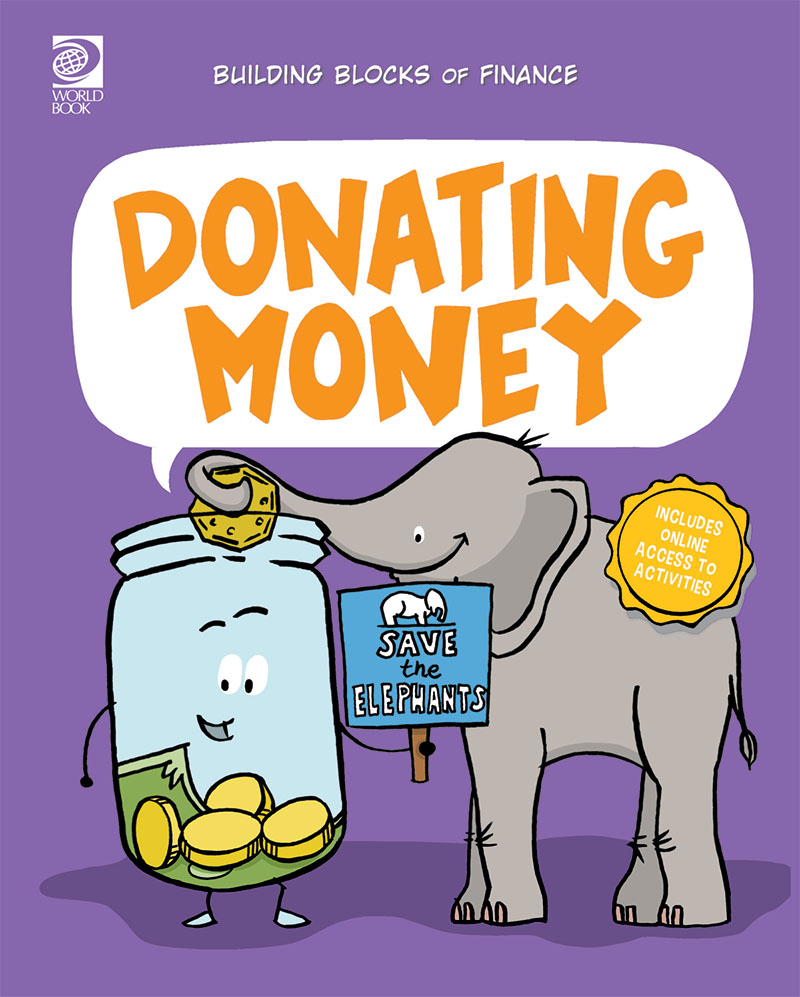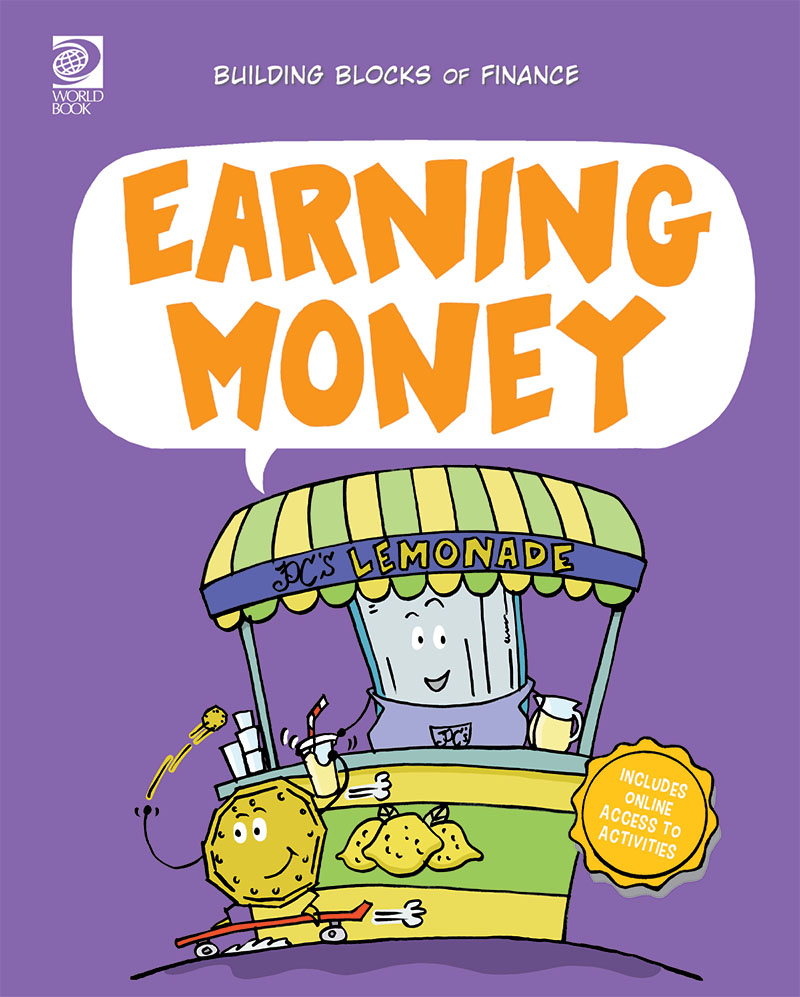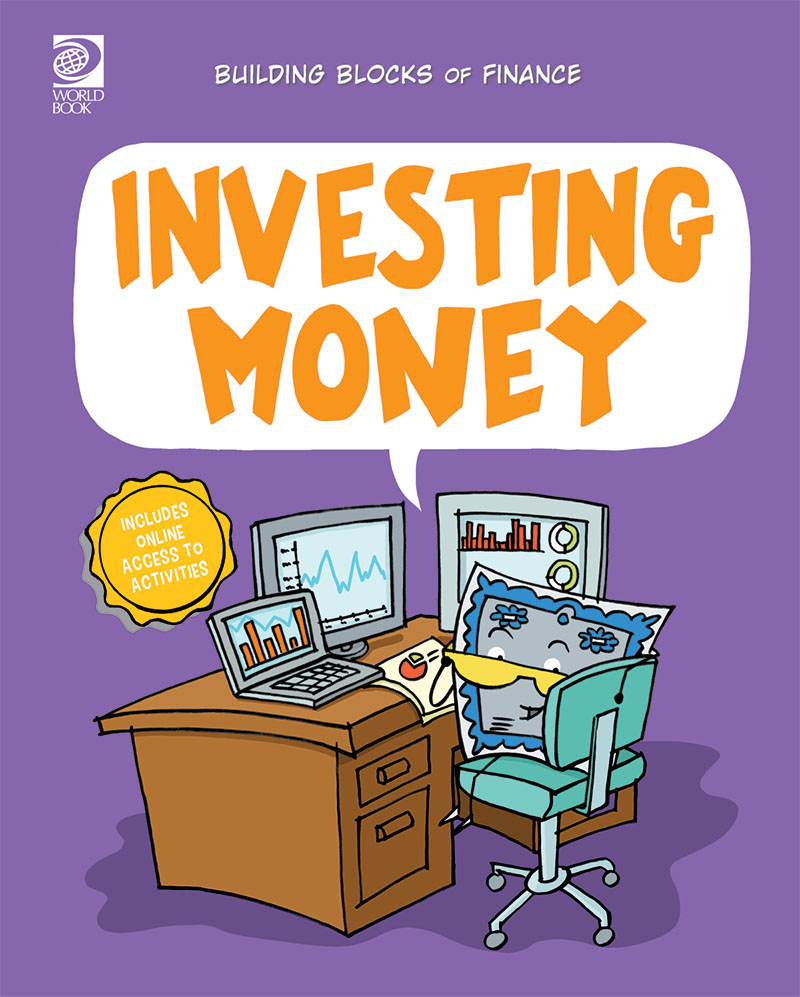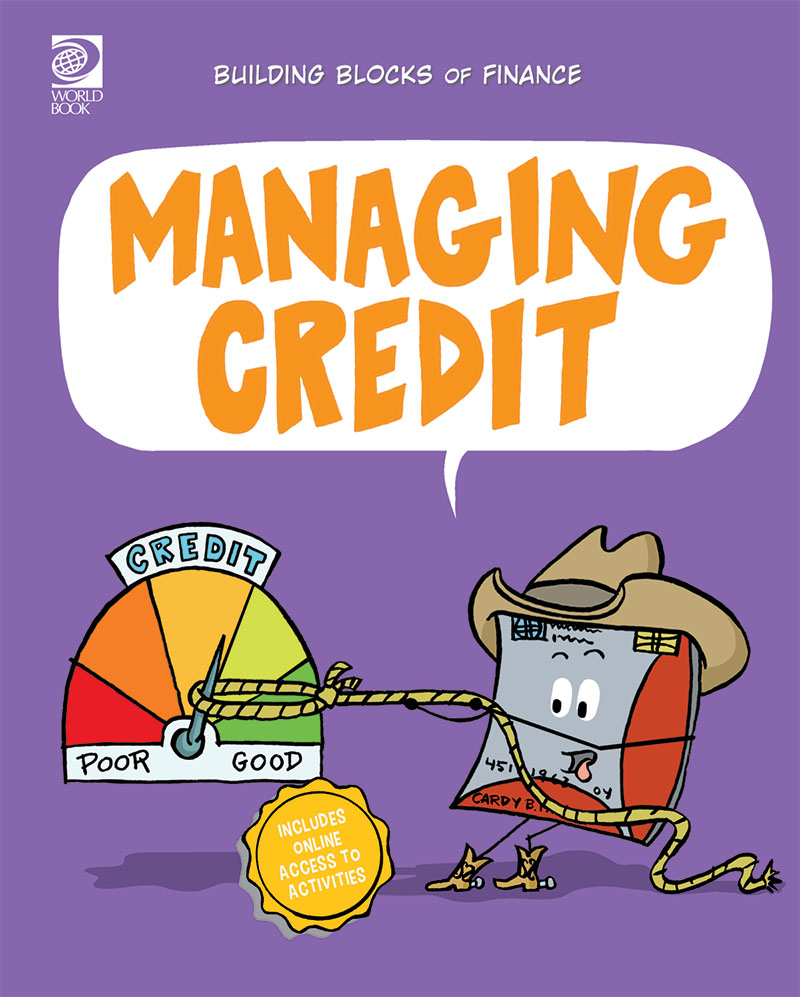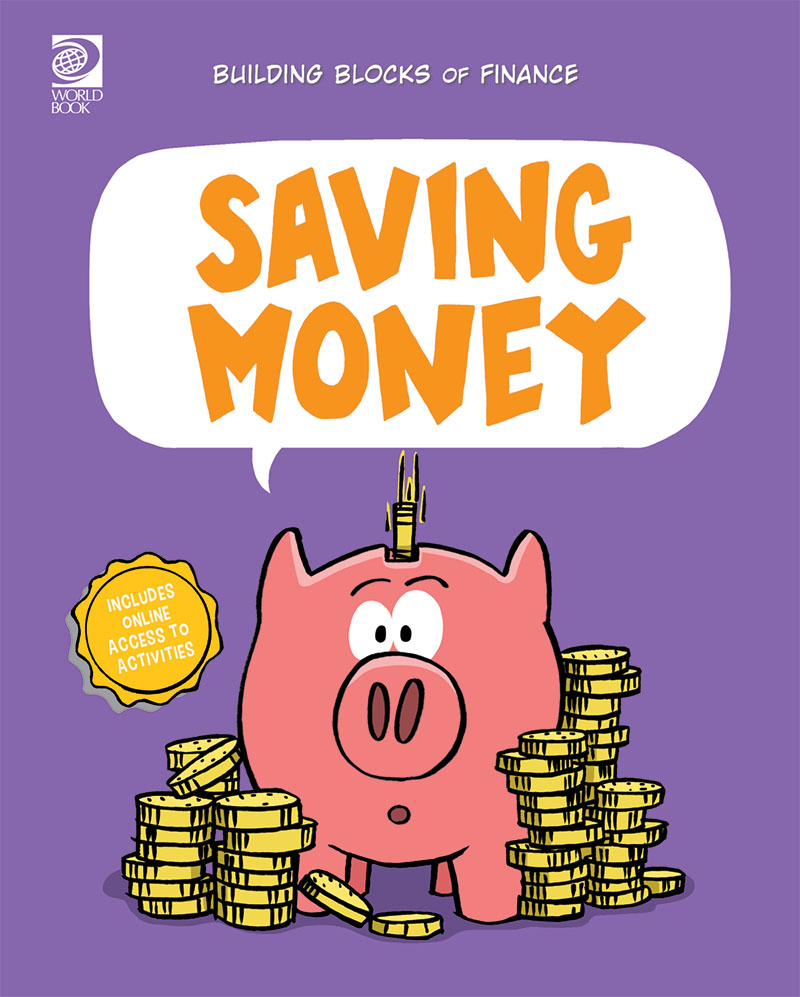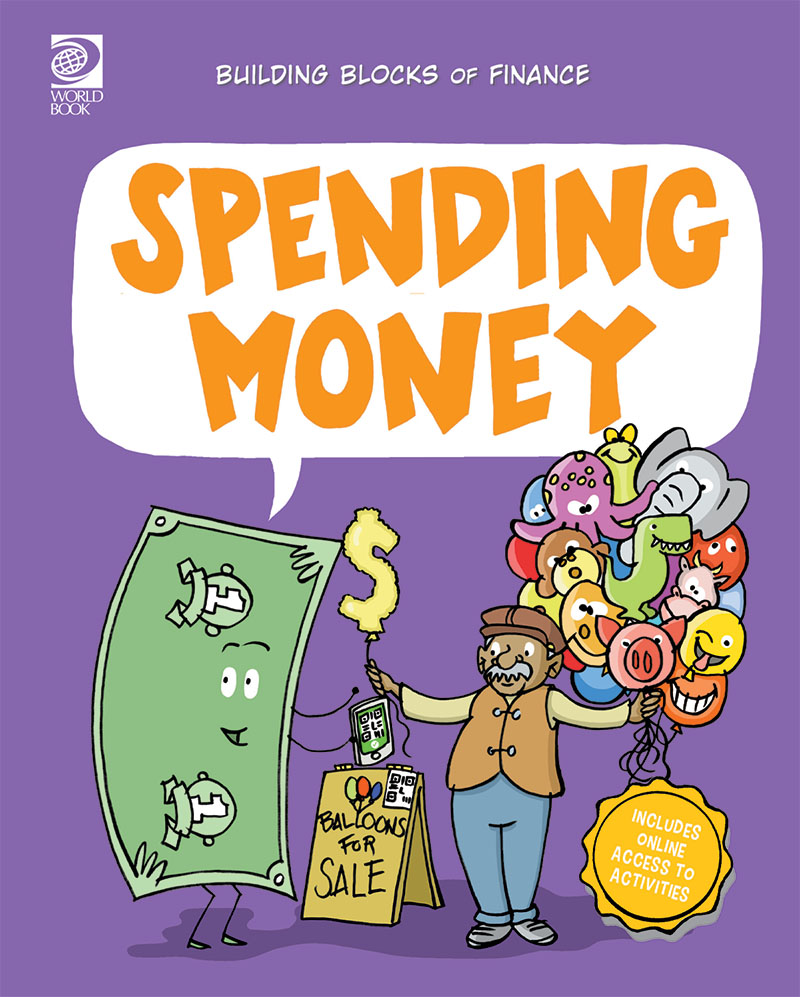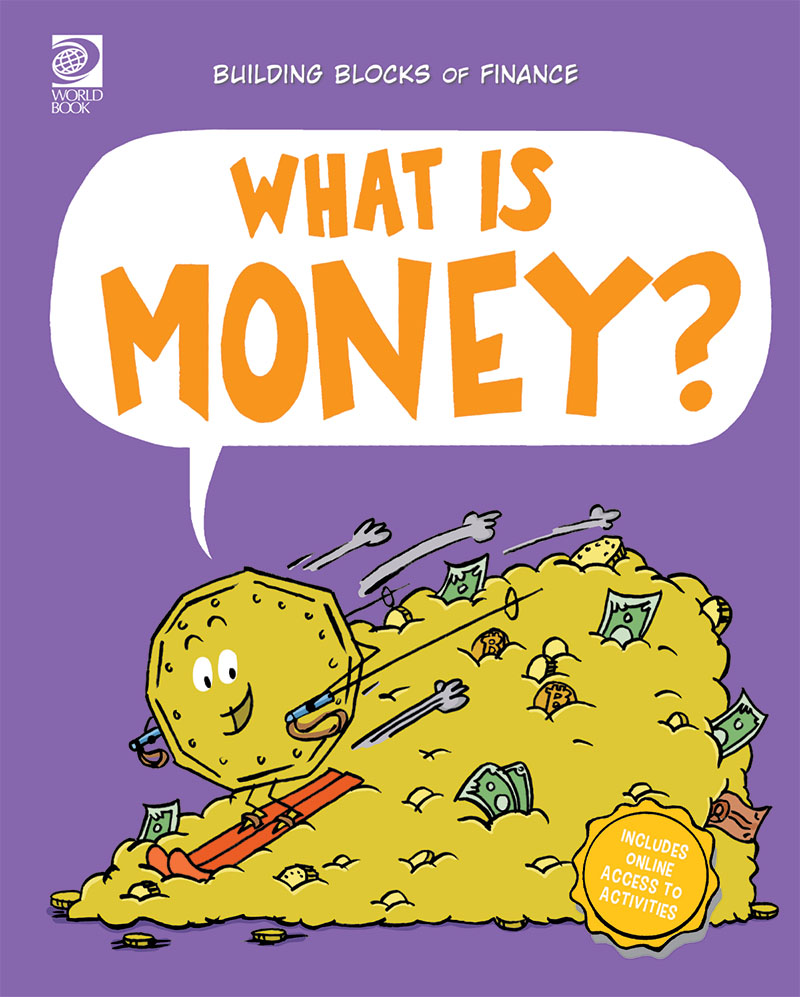Building Blocks of Finance
The Building Blocks of Finance Educator Section includes tools as well as ready-to-use classroom materials. Educators can see how the National Standards for Personal Financial Education and the Common Core State Standards align with the Building Blocks of Finance books, organized by the grade level(s) they teach. In addition, educators will have access to reading resources such as discussion guides and comprehension checks as well as fun classroom activities like vocabulary bingo! The Educators Section will also include engaging lessons with built-in differentiation options to support all learners as they continue to explore this content.
Building Blocks of Finance Standards Alignment
Use this section to view how the National Standards for Personal Financial Education align to the Building Blocks of Finance series.
National Standards of Personal Financial Education
-
By the end of 4th grade, students who demonstrate understanding can:
Standard Learning Outcome Building Blocks Book(s) Earning Income 4-1. People have different job choices depending on their knowledge, skills, interests, and experience. 4-1a. List the different types of jobs. Earning Money 4-1b. Discuss the types of knowledge, skills, interests, and experience required for different types of jobs. Earning Money Earning Income 4-2. People may be able to improve their ability to earn income by gaining new knowledge, skills, and experience. 4-2a. Give examples of how an individual’s knowledge, skills, and experience could affect their ability to earn income. Earning Money 4-2b. Brainstorm ways to improve one’s ability to earn income. Earning Money Earning Income 4-4. People can earn income by starting a new business as an entrepreneur or by owning a business. 4-4c. Estimate how much income could be earned from a business operated by children (such as a lawn service or lemonade stand). Earning Money Earning Income 4-5. People can earn income by lending money or by renting their property to others. 4-5a. List several examples of ways in which people can earn income by lending their money or by renting their property to others. Earning Money, Investing Money 4-5b. Identify different types of property that can be used by owners to earn rental income (such as apartments, automobiles, or tools). Earning Money, Investing Money Earning Income 4-6. Income can be received as gifts or as an allowance for which no specified work may be required. 4-6a. Explain the possible reasons for gifting money to others. Earning Money, Spending Money Earning Income 4-7. Most income is taxed by the government to pay for government-provided goods and services. 4-7a. Describe examples of government-provided goods and services that are paid for with taxes. Earning Money, Donating Money 4-7b. Explain why citizens are required to contribute to the cost of fire protection, police, public libraries, and schools. Earning Money Spending 4-1. People differ in their preferences, priorities, and resources available for consuming goods and services. 4-1a.Give examples of differences in people’s preferences that can influence their spending on goods and services. What is Money?, Earning Money, Spending Money 4-1b. Brainstorm a personal list of goals for consumption of goods and services. What is Money?, Earning Money, Spending Money 4-1c. Prioritize future spending, taking resource limitations into account. Spending Money, Saving Money Spending 4-2. Money can be spent to increase one’s own or another individual’s personal satisfaction or to share the cost of goods and services. 4-2a. Describe ways that people in a community share the cost of services available to everyone. Earning Money 4-2b. Analyze how people differ in their values and attitudes about spending money. Earning Money 4-2c. Identify ways you spend your money to increase personal satisfaction. Spending Money Spending 4-3. When people make a decision to use money for a particular purpose, they incur an opportunity cost in that they cannot use the money for another purpose. 4-3a. Define the concept of opportunity cost. Spending Money, Donating Money 4-3b. Provide examples of financial choices that have opportunity costs. Spending Money, Donating Money Spending 4-4. Purchasing decisions have costs and benefits that can be different for different people. 4-4b. Explain the costs and benefits of trading goods and services between family members and friends. Spending Money Spending 4-5. Price, spending choices of others, peer pressure, and advertising about a product or service can influence purchase decisions. 4-5a. Explain how peer pressure can affect purchasing decisions. Spending Money, Donating Money 4-5b. Share examples of how price, spending choices of others, peer pressure, or advertising influence a purchase decision. Earning Money, Spending Money, Donating Money Spending 4-6. Payment methods for making purchases include cash, checks, debit cards, and credit cards. 4-6a. Explain the similarities between paying for purchases with cash, checks, and debit cards. Spending Money 4-6b. Compare the effects of using debit versus credit cards to make purchases. Spending Money Saving 4-1. When people save money, they are choosing not to spend money today to be able to buy something in the future. 4-1a. Explain why it is often harder to save than to spend money. Saving Money 4-1b. Give an example of buying something now versus saving money for the future and explain how they would make that decision. Saving Money Saving 4-2. A savings plan is a plan for setting aside money to pay for a future need, goal, or emergency. 4-2a. Map out a savings plan designed to achieve a future purchase objective. Saving Money 4-2b. Give an example to illustrate the importance of having some money set aside for emergencies. Saving Money 4-2c. Describe ways that people can decrease expenses to save more of their money. Saving Money Saving 4-3. People differ in their values and attitudes about saving. 4-3a. Discuss how life circumstances and experiences can cause people to differ in their values and attitudes about saving and their ability to save. Earning Money, Saving Money 4-3b. Explain how a person’s friends and family can influence their values and attitudes about saving. Earning Money, Saving Money Saving 4-4. Safety and ease of access are factors to consider when deciding where to keep savings. 4-4a. Describe the advantages of saving money in an account at a financial institution rather than keeping the money at home. Saving Money 4-4b. Identify safe places for people to keep their money. Saving Money Saving 4-5. Financial institutions often pay interest on deposit accounts to attract customers to deposit money in their institution. 4-5a. Explain why financial institutions, such as banks and credit unions, pay interest to depositors. Saving Money 4-5b. Compare the interest rates on savings accounts at two financial institutions. Saving Money Investing 4-1. People invest their money so that it can grow over time and help them achieve their long-term financial goals. 4-1a. Explain why people invest their money. Investing Money 4-1b. Identify long-term financial goals that are most likely to be achieved by people who regularly invest their money over many years. Investing Money Investing 4-2. Low-interest savings accounts are commonly used for short-term financial goals and emergency funds because they are low risk. When saving for longer-term financial goals, people often invest in riskier assets to earn higher returns. 4-2a. Identify the similarities and differences between saving and investing. Saving Money, Investing Money 4-2b. Provide examples of financial goals that are suited for saving versus investing. Saving Money, Investing Money Managing Credit 4-1. Interest is the price a borrower pays for using someone else’s money, and the income earned by the lender. 4-1a. Explain why a person who borrows $100 to buy something, often must pay back more than $100 at a future date. What is Money?, Spending Money, Managing Credit 4-1b. Describe the reasons why businesses and individuals sometimes lend money to others. What is Money?, Spending Money, Managing Credit Managing Credit 4-2. When a person pays with credit, they have immediate use of purchased goods or services while agreeing to repay the lender in the future with interest. 4-2a. Identify goods and services that people often purchase with credit. Managing Credit 4-2b. Discuss reasons people may prefer to buy something with credit rather than paying cash. Managing Credit Managing Credit 4-3. Lenders are more likely to approve borrowers who do not have a lot of other debt and who have a history of paying back loans as promised. 4-3a. Explain why a person might prefer to lend an item or money to one person over another. Spending Money, Managing Credit 4-3b. Discuss why a person might be reluctant to lend money or personal possessions to someone who has a history of not repaying previous loans. Spending Money, Managing Credit Managing Risk 4-1. People are exposed to risk when there is a chance of loss or harm. Risk is an unavoidable part of daily life. 4-1a. Give examples of risks that people and households face. Investing Money, Managing Credit 4-1b. Estimate the losses and costs associated with certain physical and financial risks. Investing Money, Managing Credit Managing Risk 4-2. People who are exposed to risks often try to reduce or avoid the negative consequences of those risks. 4-2a. Recommend ways to reduce or avoid a given risk. Investing Money, Managing Credit 4-2b. Identify types of risks that are difficult or impossible for people to reduce or avoid. Investing Money Managing Risk 4-3. One way to cope with unexpected losses is to save for emergencies. 4-3a. Give examples of life events for which emergency savings could offset financial losses. Spending Money, Managing Credit 4-3b. Develop a system to keep track of personal items and handle small amounts of money. Spending Money, Saving Money, Investing Money -
By the end of 8th grade, students who demonstrate understanding can:
Standard Learning Outcome Building Blocks Book(s) Earning Income 8-1. Careers are based on working at jobs in the same occupation or profession for many years. Careers vary in their education and training requirements. 8-1a. Discuss the advantages and disadvantages of working in the same occupation or profession for many years. Earning Money 8-1b. Compare the education and training requirements for at least two careers. Earning Money 8-1c. Interview a person who is in a career of interest and create a timeline that shows the progression of their education, training, and job experiences. Earning Money Earning Income 8-2. People make many decisions over a lifetime about their education, jobs, and careers that affect their incomes and opportunities. 8-2b. Conduct research on a specific career field. Describe the education, job, or career decisions individuals in this field might make over their lifetime and explain how this could affect their income potential and opportunities. Earning Money Earning Income 8-3. Getting more education, training, and experience can increase a person’s human capital, productivity, and income-earning potential. 8-3b. Explain why adults with a college education may earn more than adults with no education beyond high school. Earning Money 8-3c. Discuss how specific skills training can improve a young person’s human capital, productivity, and income-earning potential. Earning Money Earning Income 8-4. Education, training, and development of job skills have opportunity costs in the form of time, effort, and money. 8-4a. Describe the opportunity costs of attending a training course on babysitting, lifeguarding, or first aid. Earning Money 8-4b. Compare the costs of post-secondary education with the potential increase in income for a career of choice. Earning Money 8-4c. Explain why families/caregivers might choose to help pay for education and training of younger family members. Earning Money Earning Income 8-5. Net income (take-home pay) is the amount left from wages and salaries after taxes and payroll deductions. 8-5a. Differentiate between gross and net income. Earning Money, Donating Money Earning Income 8-7. People are required to pay taxes on most types of income, including wages, salaries, commissions, tips, earnings on investments, and self-employment income. 8-7a. Illustrate the relationship between income level and income tax paid. Earning Money, Donating Money Earning Income 8-9. Entrepreneurs gain satisfactions from working for themselves and expect to earn profits that will compensate for the risks associated with new business ventures. 8-9b. Discuss why starting a new business could be riskier than other career choices. What is Money?, Earning Money, Investing Money, Managing Credit Spending 8-1. Creating a budget can help people make informed choices about spending, saving, and managing money in order to achieve financial goals. 8-1a.Identify personal goals for spending and saving. Spending Money, Saving Money, Donating Money 8-1b. Create a budget that includes expenses and savings out of a given amount of income. Saving Money 8-1c. Explain why people with identical incomes make different choices for spending, saving, and managing money. Spending Money, Saving Money, Donating Money 8-1d. Discuss the budgeting challenges faced by people living on minimum wage. Spending Money, Saving Money, Donating Money Spending 8-2. Making an informed purchase decision requires a consumer to critically evaluate price, product claims, and quality information from a variety of sources. 8-2b. Explain the types of information most helpful in making a purchase decision. Spending Money, Donating Money Spending 8-4.Consumers weigh the costs and benefits of different payment methods to determine the best option for purchasing goods and services. 8-4a. Explain the difference between a debit card and a credit card. Spending Money 8-4b. Explain how various payment methods are used to purchase goods and services. Spending Money 8-4c. Summarize the advantages, disadvantages, risks, and protections of various payment methods. Spending Money Saving 8-1. People save money for many different purposes, including large purchases such as cars and homes, education costs, retirement, and emergencies. 8-1a. Identify the most common reasons that people save money for the future. What is Money?, Saving Money 8-1b. Create a savings plan that will allow someone to make a large purchase in one year, 5 years, and 10 years. What is Money?, Saving Money Saving 8-2. Savings decisions depend on individual preferences and circumstances, and can impact personal satisfaction and financial well-being. 8-2a. Compare personal attitudes toward saving to those of a friend or relative. Saving Money 8-2b. Explain how a person’s personality type might affect their willingness to save or stick to a savings plan. Saving Money 8-2c. Identify life situations that can make it difficult for a person to save or to stick to a savings plan. Saving Money Saving 8-3. Financial institutions pay interest to depositors and loan out the money to borrowers who pay interest on their loans. 8-3a. Compare and contrast different types of financial institutions and their products and services. Saving Money 8-3b. Compare the interest rate paid by a financial institution on savings accounts to the interest charged by the same institution on loans. Saving Money Saving 8-4. Interest earned on savings is the interest rate multiplied by the balance in the account, which includes the original amount saved (principal) and previously earned interest. 8-4a. Differentiate between principal and interest. Saving Money 8-4b.Demonstrate how earning a higher interest rate on money in a savings account will help a person to reach their savings goal sooner. Saving Money Saving 8-5. Compound interest is interest on both the original principal and previously earned interest, as compared to simple interest which is only interest on the original principal. 8-5b. Demonstrate how annual interest earned increases over time when both the original principal and earned interest are left in a savings account. Saving Money Investing 8-1. Investors in financial assets expect an increase in value over time (capital gain) and/or receipt of regular income, such as interest or dividends. 8-1a. List the potential benefits of investing money in a financial asset. Investing Money 8-1b. Explain why some people might prefer to buy investments that grow in value over time instead of investments that pay regular income. Investing Money Investing 8-2. Common types of financial assets include certificates of deposit (CDs), stocks, bonds, mutual funds, and real estate. 8-2a. Define common types of financial assets. Investing Money 8-2b. Demonstrate how to find the current prices of stocks, bonds, and mutual funds. Investing Money 8-2c. Discuss how some financial assets can be harder to sell quickly (e.g. stocks traded on an exchange versus real estate). Investing Money Investing 8-3. Investors who buy corporate or government bonds are lending money to the issuer in exchange for regular interest payments. 8-3a. Compare corporate and government bonds. Investing Money Investing 8-4. Investors who buy corporate stock become part-owners of a business, benefit from potential increases in the value of their shares, and may receive dividend income. 8-4b. Explain the potential risks and rewards of investing in corporate stock. Investing Money Investing 8-5. Instead of buying individual stocks and bonds, investors can buy shares of pooled investments such as mutual funds and exchange-traded funds (ETFs). 8-5a. Explain the concept of investment diversification both within and among different asset classes. Investing Money 8-5b. Discuss the advantages and disadvantages of investing in a diversified stock or bond mutual fund versus individual stocks and bonds. Investing Money Investing 8-6. Different types of investments expose investors to different degrees of risk. 8-6a. Compare rates of return on different types of investments and order them by rank. Investing Money 8-6b. Identify investments that would be most appropriate for people who are uncomfortable with taking financial risk. Investing Money Managing Credit 8-1. Interest rates and fees vary by type of lender, type of credit, and market conditions. 8-1a. Identify financial institutions and businesses that offer consumer credit. Managing Credit 8-1b. Compare lenders based on types of credit offered, interest rates, and fees. Managing Credit Managing Credit 8-3. The longer a loan repayment period and the higher the interest rate, the larger the total amount of interest paid by a borrower. 8-3a. Describe the effect of higher interest rates and longer loan terms on the total cost of a loan. Spending Money, Managing Credit Managing Credit 8-4. Credit cards typically charge higher interest rates on balances due compared with rates on other types of loans. 8-4a. Explain why credit card interest rates tend to be higher than rates for secured loans, such as automobile loans. Managing Credit 8-4b. Describe how a credit card user can minimize interest charges on their credit card purchases. Managing Credit Managing Credit 8-5. Lenders charge different interest rates based on borrower risk of nonpayment, which is commonly evaluated using information in the borrower’s credit report. 8-5a. Identify the types of information contained in a credit report. Managing Credit 8-5b. Discuss how a borrower’s credit history can impact their borrowing costs. Spending Money, Managing Credit Managing Credit 8-6. When people borrow money to invest in higher education or housing, the risks and costs may be outweighed by the future benefits. 8-6a. Explain why using credit to finance education and housing could be beneficial. Managing Credit Managing Credit 8-7. Borrowing increases debt and can negatively affect a person’s finances. 8-7b. Predict the possible consequences of having a lot of debt payments relative to income. Spending Money, Managing Credit Managing Risk 8-1. Financial loss can occur from unexpected events that damage health, wealth, income, property, and/or future opportunities. 8-1a. Describe how an unexpected event that damages health or property can impact a family’s financial situation. Saving Money, Investing Money 8-1b. Explain how advance planning can reduce the financial impact of an event that causes damages to personal property. Saving Money Managing Risk 8-5. People can choose to avoid, reduce, retain, or transfer risk through the purchase of insurance. Each option has different costs and benefits. 8-5a. Give examples of how people manage the risk of financial loss through risk avoidance, reduction, retention, and transfer. Managing Credit Managing Risk 8-7. Identity theft is the use of someone else’s personal identification information to commit a crime. 8-7a. Explain methods used by identify thieves to obtain personal information to commit a crime. Managing Credit
Reading Resources
Each book in the Building Blocks of Finance series comes with a discussion guide as well as a comprehension check! Each Discussion Guide includes 10 questions and is intended to be used during or after reading the text to help students better understand the content. Potential answers are also included. Each Comprehension Check also includes 10 questions and comes with an Answer Key. The Comprehension Check is intended to be used after reading and is a great assessment option.
Classroom Activities
These activities are designed for classroom use and can be used in both the small group and/or whole group setting. These activities bring some fun, engagement, and reflection to students’ learning!
Vocabulary Bingo
Play this bingo game with your students to deepen their understanding of key vocabulary words related to the entire Building Blocks of Finance series. This can also be used as a fun review game before an assessment.
Debit Cards vs. Credit Cards
This hands-on activity involves sorting information about debit and credit cards to better understand how these tools work as well as the pros and cons of each. This activity will require students to apply what they know about debit and credit cards to real-world situations.
My Spending Priorities
Learning about finances is one thing but being able to apply our knowledge to our real lives is another. Luckily for students, today they will consider their spending priorities and how these might change depending on the situation.
Lesson Plans
World Book has created lesson plans that can be used to help deepen students’ understanding of the Building Blocks of Finance concepts. These full lesson plans are aligned to standards, include assessment options, describe possible differentiation considerations, and include a variety of ways for students to stay engaged in their learning. Many materials are included as quick and easy downloads for your convenience.
Supply and Demand
This lesson is designed for students in grades 4-8 and includes differentiation options to make the lesson appropriate for your group of students. In this lesson, students will read about the concept of supply and demand. They will also analyze a graph to help deepen their understanding of this idea. Students will apply their understanding and use their creativity to consider supply and demand in the real world.
Savings are Important Opinion Writing
This lesson is designed for students in grades 4-8 and combines financial literacy learning with opinion writing. This lesson also includes differentiation options to tailor the learning to your students’ strengths and needs. In this lesson, students will brainstorm and write about why saving money is important to them. They will reference saving for fun purchases, saving for the future, and saving for emergencies.
